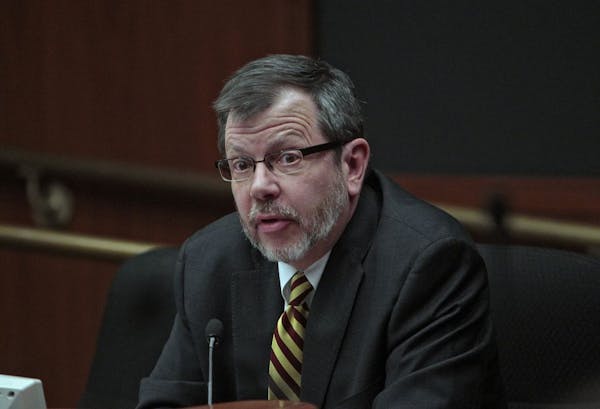In a debate over whether the University of Minnesota has too many administrators, the university has a new tool: definitions.
U officials on Thursday unveiled a way of classifying its employees that throws out what it believes was an outdated system that labeled too many people as "administrative." Instead, employees are now defined by whether they "deliver," "support" or "oversee" the university's teaching, research and outreach missions. It's hoped that the changes will help give university officials a better way to count employees in a way that more accurately reflects who is doing administrative work.
U President Eric Kaler called it "a very important management tool." The goal is to shift dollars into the group that works directly on primary activities and includes professors and researchers, he said. That group accounts for about 57 percent of personnel spending, while about 11 percent is spent on "administrative oversight."
Regents agreed that the report gives a useful baseline which the university might use to better manage its costs. But several worried that it would be of little use to a public looking for cost comparisons with other universities.
"Whatever we determine, as good as it may be, is irrelevant to the public if that other comparative data is out there," said Regent Laura Brod. "My fear is that other stuff will rule the day."
That other stuff includes numbers that universities submit to the federal government. U officials complain much of that data is useless because each university defines things differently.
The university's report splits 665 job codes into three groups: professors, lecturers, scientists and others who deliver on the "direct mission," librarians, coordinators and others who provide "mission support and facilities" and vice presidents, deans and others who give "administrative oversight."
That last group accounts for 11 percent of personnel spending and 9 percent of total expenses. Executive leaders -- including the president, vice presidents and chancellors -- make up .5 percent of total expenses, according to the report.
"While we certainly are going to keep looking for efficiencies and effectiveness in those areas, that's a pretty small portion of the overall university budget," said Lincoln Kallsen, director of financial research.
Last year, the board debated an internal report that showed a 52 percent increase in the number of jobs labeled "administrative." The report showed 2,157 full-time administrative positions, up by 742 since 2001. Meanwhile, total employment at the U grew less than 11 percent.
Under that system, a librarian would have been labeled "administrative." Now that job falls under "mission support," a category that accounts for 32 percent of personnel spending. The university has not looked back to track changes in total spending over time. This analysis, of fiscal year 2012, is a baseline.
Problems remain in this analysis, Kallsen said. Job titles, including "director" and "coordinator," give little clue to what people do.
"We know we have directors who don't have anyone reporting to them," he said. The U's Office of Human Resources is still breaking those titles down.
Ann Hagen administers a tiny graduate program in the School of Dentistry and manages and reports funds for a massive grant. Her job title: assistant program director.
She's also chair of the university's P&A Senate, an organization that represents about 5,500 academic professionals and administrators. That group has been discussing how to address years of controversy and confusion about which employees are doing what work. "How do we educate employees ... that we are more than just administrators?" Hagen said.
Jenna Ross 612-673-7168 Twitter: @ByJenna
House fire on rural property north of St. Cloud claims man, 76

Showdown over diversity programs threatens Anoka-Hennepin schools budget

Is the east side the best side in high school baseball? Poll has an answer.
DFL state senator charged with first-degree burglary after breaking into stepmother's home

